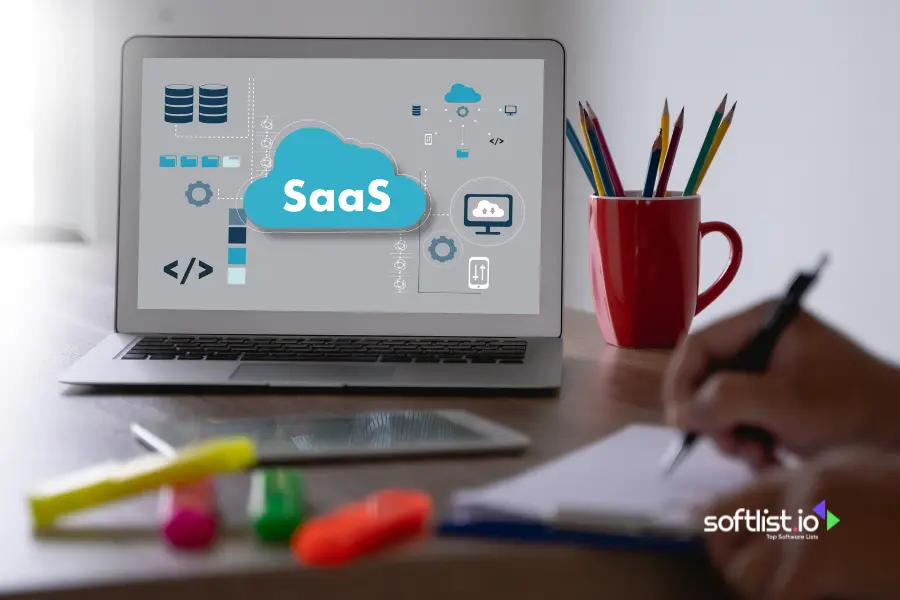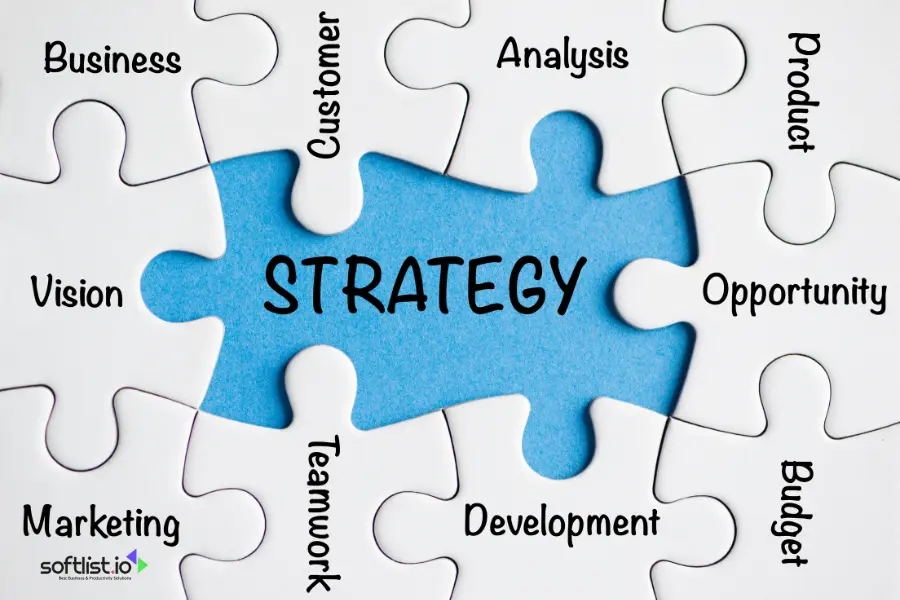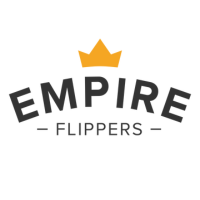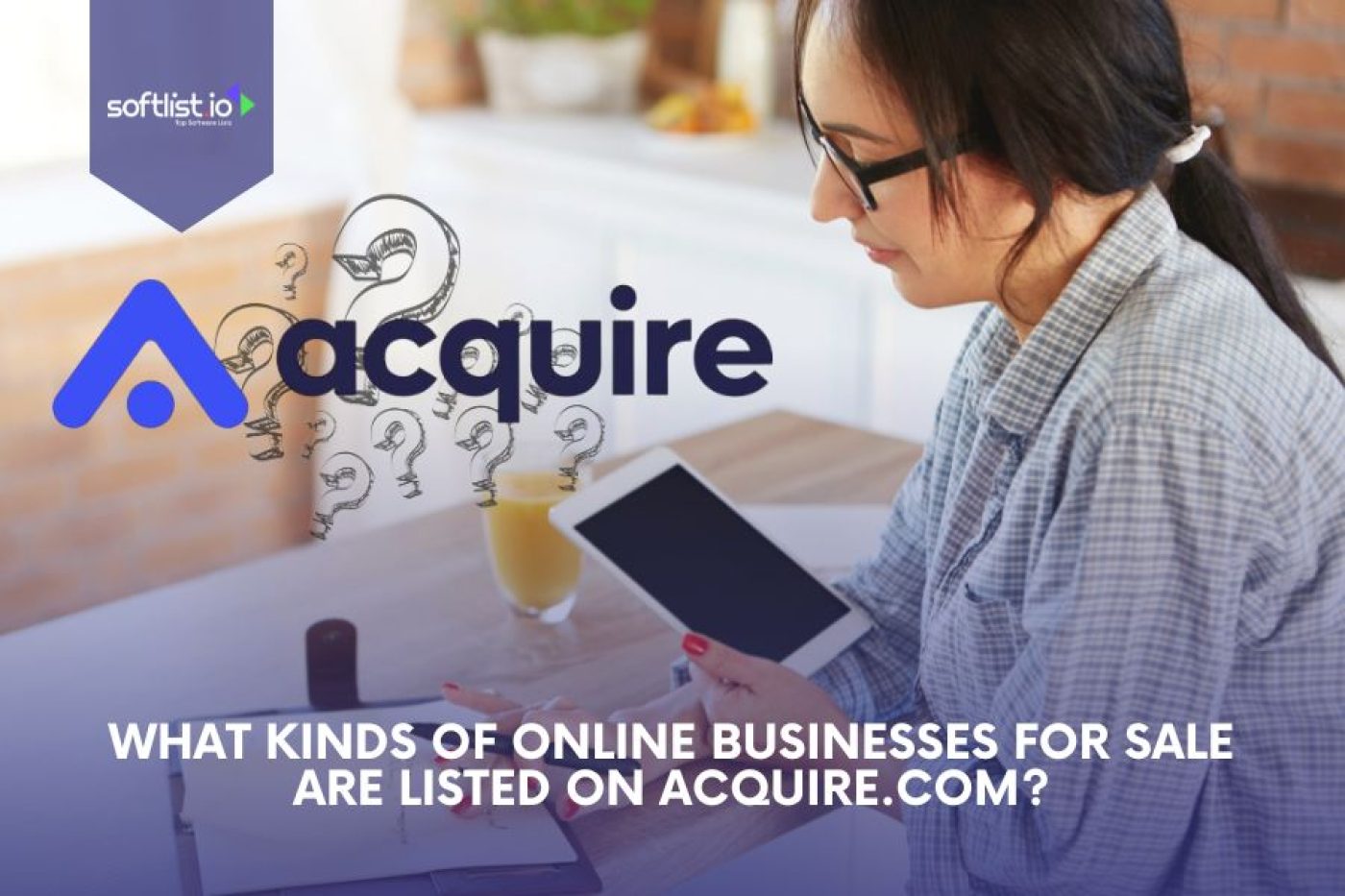It’s an attractive prospect to have an established revenue stream at your fingertips when you buy a SaaS business. But it isn’t just about acquiring a digital asset; it’s about making a strategic move with careful planning. Whether you’re looking to buy a startup SaaS, an established ecommerce platform, or an online marketplace, understanding the model and what it truly means to own and operate a SaaS company is essential.
For those scaling up their existing portfolio or diving into the online business world for the first time, taking these preparatory steps can ensure a seamless purchase. You’ve got to be ready to evaluate key opportunities and risks, especially when buying a business in a fast-moving sector. With companies for sale in this space offering promising growth potential, understanding which SaaS model is worth your investment is critical. Following a guided approach, you’ll be positioned to not only acquire a SaaS business confidently but also transform it into a valuable and thriving component of your enterprise.
Key Takeaways
- Perform Comprehensive Due Diligence: Research the market and potential acquisition targets, assessing financial health, legal compliance, technology robustness, and the product’s quality to mitigate risks and make informed decisions.
- Plan for a Smooth Transition: Develop a strategic purchase approach that includes contract transfer, clear post-sale support with the seller, and a phased integration plan to ensure continuity and growth.
- Optimize for Long-Term Success: Set up key performance indicators (KPIs) like CAC, churn rate, and MRR to monitor the business’s health, and leverage platforms like Motion Invest and Empire Flippers to find quality SaaS businesses aligned with your goals.
1. Conduct Saas Business Market Research

Source: Canva
Conducting thorough market research is a pivotal step when buying a SaaS business. It allows you to uncover crucial insights about potential acquisition targets and the broader industry.
Identify Potential Sale Targets
Pinpointing the right SaaS businesses for sale requires a strategic approach. To make an informed choice, consider these strategies:
- Utilize Marketplaces: Platforms like Softlist B2B SaaS Tools can offer useful information about potential tools and features relevant to your acquisition goals.
- Network Connections: Leverage professional networks on LinkedIn or join SaaS communities on platforms like Reddit. A discussion thread like this one introduces insightful peer experiences in identifying potential acquisitions.
- Broker Engagements: SaaS business brokers specialize in buy/sell transactions, providing curated listings and support throughout the acquisition process.
- Industry Publications and Conferences: These offer leads and critical insights into up-and-coming businesses in the SaaS space.
- Merge Technology Strategies: Use tools to track competitor analytics and market positioning, which can reveal potential acquisition targets ripe for investment.
By following these strategies, you can craft a targeted list of potentially viable SaaS businesses to consider for acquisition.
2. Perform Due Diligence

Source: Canva
Once you’ve identified a potential SaaS business to acquire, performing due diligence is your next critical step. This process is essential to uncover any hidden risks and validate that the investment is sound.
It’s not just about peering under the hood; it’s about making informed decisions with confidence. Let’s break down the core elements you need to focus on during due diligence.
Financial Analysis
Your journey starts with a thorough financial analysis. This involves diving deep into the financial statements to assess the business’s health. Look beyond the surface numbers by focusing on:
- Revenue Streams: Understanding if revenues are stable, growing, or declining over time can indicate the business’s potential and identify patterns. Do seasonal trends impact sales?
- Expense Breakdown: A clear understanding of fixed versus variable costs will reveal how scalable the operation might be. Are there unexpected spikes in expenses that could signal inefficiencies?
- Profit Margins: This is a critical metric. High margins suggest a strong market position, but extremely low margins might hint at competitive pressures.
Ensuring the financials are verified and aligned with your expectations is pivotal before moving forward.
Legal Considerations
Legal aspects serve as the backbone of a secure transaction. Ensure you have all the essential documents reviewed by legal experts to avoid any future roadblocks.
- Contract Review: Examine all customer, supplier, and partnership contracts for transferability and compliance. Are there clauses that could impede future operations?
- Compliance Checks: Investigate adherence to industry regulations and data protection laws such as GDPR or CCPA. Non-compliance can lead to significant fines and damage reputation.
- Intellectual Property (IP): Verify the ownership and protection of IP rights to avoid disputes post-acquisition.
Technical Assessment
The technology stack forms the bedrock of any SaaS business. Assessing its robustness is vital to understanding what you might be working with.
- Scalability of technology: Is the current infrastructure capable of supporting growth, or will it require immediate upgrades?
- Security Measures: Evaluate the security software and protocols in place. Are there vulnerabilities that need to be addressed?
- Codebase Quality: Consider the ease with which new developers can understand and modify the code. Is the documentation thorough and up-to-date?
By examining these facets, you’ll get a clear picture of the SaaS business’s technical strengths and weaknesses, helping you plan effectively for the future.
Adopting a detailed approach across these three areas allows you to engage in a laser-focused evaluation that minimizes risks and sets a solid foundation for a successful acquisition.
3. Analyze the Product and Code Quality

Source: Canva
When buying a SaaS business, understanding the quality of the product and its underlying codebase is crucial. This section highlights key aspects of product and code analysis that will help you ensure you’re getting a robust solution without hidden technical debt. Let’s explore these elements and the steps you can take to ensure your SaaS investment is up to scratch.
Product Quality Assessment
Evaluating product quality helps to understand how well the software functions from the user’s perspective. This assessment can encompass several elements, ensuring the product can sustain its user base and attract new customers.
- User Experience (UX): Start with the interface. Is it intuitive and user-friendly? A good UX can be a significant selling point and improve customer retention. Have focal points like font clarity, navigation, and visual aesthetics been effectively prioritized?
- Product Features and Capacity: Are the features aligned with current market demands? Assess the function for bugs and responsiveness. Measuring the product against competitors’ offerings can also reveal gaps in your strategy or highlight strengths.
- Customer Feedback: Collect and analyze customer feedback through reviews and surveys. Customer satisfaction is a powerful indicator of potential, as happy clients are likely to remain loyal.
Looking into resources like What is Product Analysis in SaaS can give you detailed insights and tools to evaluate product offerings.
Code Quality Analysis
It’s not just about how the product looks and feels. The strength lies in its backbone, its code. Measuring code quality enables you to anticipate maintenance needs and scalability issues, which are paramount for future development and costs. Here are some focal points:
- Code Readability and Documentation: Well-documented and easily readable code means new developers can onboard quickly and efficiently. Poorly written code can lead to increased errors and longer development times.
- Code Complexity: Assess the complexity of the codebase. Complex code might seem like a special work of art but could make maintenance unnecessarily burdensome. Using tools to measure cyclomatic complexity can be beneficial.
- Automated Testing and Static Analysis: Implementing a framework for regular automated testing shields against bugs infiltrating your software.
4. Develop a Purchase Strategy

Source: Canva
When you’re ready to buy a SaaS business, developing a clear purchase strategy is crucial. This step is not just about agreeing on a price; it’s about ensuring that every detail aligns with your long-term vision and operational goals. Pay close attention to each aspect of the acquisition process, from negotiation to securing financing.
Negotiating Terms
Negotiation is where you start shaping your deal. Here are some tips to help you secure favorable terms:
- Understand the Business Value: Know the strengths, weaknesses, and unique selling points of the business. A comprehensive grasp of business dynamics will help you argue for terms that truly reflect its value.
- Be Ready to Compromise: While it’s essential to have clear goals, flexibility can often lead to better outcomes. Compromise doesn’t mean losing; it means finding a middle ground where both parties feel satisfied.
- Stay Informed: Knowledge is power. Keep yourself updated on market trends and values of similar businesses. Showing that you’re informed can help you gain leverage during negotiations.
- Clarify Responsibilities: Ensure that the terms clearly define each party’s responsibilities post-acquisition. This includes transition assistance from the seller, which can be invaluable.
- Legal Expertise: Always have a legal expert review the terms to avoid surprises later. They can often spot clauses that may not align with your best interests.
Taking these steps will not only help you secure a business at a fair price but also lay the groundwork for a smooth transition.
5. Secure Contracts and Subscriptions

Source: Canva
Securing contracts and managing subscriptions effectively is crucial when buying a SaaS business. These components form the backbone of predictable revenue and client satisfaction. Proper oversight can prevent missteps that might disrupt your business flow. Here’s how to handle these elements seamlessly.
Ensuring Contract Security
Contracts are the legal lifeblood of any business arrangement. They define obligations, set expectations, and provide a framework for delivering services and recourse in disputes. Here’s what you need to focus on:
- Verify Transferability: Make sure existing contracts with clients and vendors can be legally transferred to you as the new owner. This ensures continuity without re-negotiation.
- Scrutinize Terms: Carefully examine terms related to service level agreements (SLAs), termination clauses, and fees. Are there any conditions that could be potential risks?
- Legal Counsel Involvement: Always have contracts reviewed by legal professionals well-versed in SaaS agreements. Their expertise helps spot any inconsistencies or unfavorable terms.
Ensuring contract compliance and security forms a foundational element of a smooth transition period post-acquisition.
6. Evaluate Payment Processing and Financial Records

Source: Canva
When buying a SaaS business, scrutinizing payment processing and financial records is a step you simply can’t overlook. Handling this facet with precision helps ensure that the foundation of your new investment is stable. Here’s how you can methodically assess these critical components.
Financial Records Examination
Diving into the financial health of the SaaS business is akin to checking vital signs. Comprehensive financial analysis will uncover any lurking issues that might affect your decision.
- Historic Financial Performance: Examine past income statements, balance sheets, and cash flow reports. These documents should demonstrate consistent profit, efficient expense management, and sustainable growth. Are there any red flags or irregularities in revenue reporting?
- Revenue Channels: Identify the primary sources of revenue. Are they diversified adequately? Relying heavily on a single client or niche could pose risks if market conditions shift.
- Liabilities and Obligations: Scrutinize any outstanding debts, operating leases, or financial commitments. A thorough understanding here will prevent unwelcome surprises post-acquisition.
Employing financial experts can ensure thoroughness in this process, providing confidence that you’re not stepping into potential pitfalls.
Evaluating payment processing and financial records provides clarity on operational efficiency, revenue accuracy, and future scalability of the SaaS business you’re eyeing. Taking these steps gives you certainty that the transaction stands on firm financial grounds, ensuring a smooth handover and future profitability.
7. Plan for Transition and Integration

Source: Canva
When you buy a SaaS business, meticulous planning for transition and integration is crucial to achieving a seamless transfer of ownership. This phase isn’t just about taking over a business; it’s about ensuring continuity, maintaining momentum, and fostering growth in your new venture.
Integrating Systems and Processes
Another critical element is the integration of systems and processes. Post-acquisition, legacy systems need to merge with your operations to create a cohesive entity. Here’s how to streamline this process effectively:
- Thorough Evaluation: Before integrating, assess all existing systems and workflows. Identify overlaps and potential compatibility issues. This evaluation will help reduce redundant processes and optimize efficiencies.
- Phased Approach: Implement changes in phases rather than executing a complete overhaul. This minimizes risks and allows for adjustments based on feedback and results.
Successfully integrating systems isn’t just about unifying operations; it’s about creating an enhanced framework that leverages existing strengths while paving a pathway for scalable growth. Tools and strategies for system integration are ever-evolving, offering a variety of solutions tailored to different business needs.
8. Negotiate a Post-Sale Support Period

Source: Canva
Acquiring a SaaS business marks the start of a new chapter filled with opportunities and challenges. While the acquisition handshake represents a significant milestone, it’s crucial not to overlook the post-sale support period, a critical component ensuring a smooth transition.
This involves establishing a partnership with the seller that extends beyond the closing of the deal, mitigating risks, and facilitating a successful changeover.
Understanding Post-Sale Support
The post-sale support period provides you, the buyer, with access to the seller’s insights and expertise for a specified duration post-acquisition. This is an essential safety net. It ensures continued operations and addresses any unforeseen issues that might surface once the business is under your control.
Sellers bring invaluable knowledge about customer expectations, operational nuances, and technical specifics that are hard to transfer merely through documents.
Structuring the Support Period
Effectively negotiating the terms of post-sale support requires clarity and foresight. Here’s how you can structure this pivotal arrangement:
- Duration of Support: Determine how long you’ll need the seller’s assistance. This can vary from a few weeks to several months based on the complexity of the business.
- Scope of Involvement: The seller’s role can range from limited email support to active involvement in daily operations. Be clear about the level and type of support needed to avoid misunderstandings.
- Compensation: While some sellers might include a certain level of post-sale support in the sale agreement, additional compensation may be necessary for extensive involvement. Negotiations should consider the value added by the seller’s continued presence.
- Communication Channels: Establish how you’ll communicate during this period. Whether it’s through in-person meetings, video calls, or messaging apps. This ensures prompt and effective resolution of any issues.
- Performance Benchmarks: Set clear milestones to evaluate the effectiveness of the support provided. Align these benchmarks with business objectives to ensure the support is contributing to growth and stability.
Negotiating a robust post-sale support period is not just a safety net; it’s a strategic asset that can make the transition less bumpy and more beneficial. Through open dialogue and well-defined terms, you secure an anchor point, empowering you to leverage the existing momentum and pioneering a successful path forward.
9. Monitor and Optimize Performance

Source: Canva
Finally, monitoring and optimizing performance is crucial. Keeping a finger on the pulse of every aspect of your newly acquired business ensures that it not only survives but thrives in the long run. Here, we outline strategies to effectively monitor key areas and optimize them for enhanced business success.
Setting KPIs for Success: Detail which key performance indicators to focus on post-acquisition.
Establishing the right Key Performance Indicators (KPIs) is vital for evaluating your SaaS business’s health and guiding it toward success. Choosing the right metrics informs better decision-making, aligns teams toward common goals, and uncovers growth opportunities. Here are some essential KPIs to zero in on:
- Customer Acquisition Cost (CAC): This KPI reveals how much you spend to gain a new customer. Keeping this cost low while maintaining quality service is essential for profitability.
- Customer Lifetime Value (CLV): CLV measures the total revenue expected from a customer throughout their relationship with your business. Aim to increase CLV by enhancing the customer experience and upselling opportunities.
- Churn Rate: Monitor the churn rate to understand how many customers are leaving. A high churn rate signifies dissatisfaction, pointing to the need for improvements in product or service quality.
- Monthly Recurring Revenue (MRR): MRR is the bedrock of SaaS financial stability. Tracking it helps gauge revenue trends and forecast future earnings.
- Net Promoter Score (NPS): This score indicates customer loyalty and satisfaction. Enhancing NPS involves refining customer service and experience.
- Product Usage and Engagement: Analyze how customers are interacting with your software. Higher engagement often points to customer satisfaction and reduced risk of churn.
These KPIs not only assess the current state but also serve as a springboard for continuous improvement strategies. Utilize tools and analytics platforms to track these metrics efficiently, provide insights, and facilitate data-driven decisions.
By maintaining a regular review cycle of these indicators, you can swiftly identify any issues, align resources accordingly, and keep your business trajectory on an upward curve.
Explore Platforms for Buying SaaS Business
Finding the right platform to buy a SaaS business can be as crucial as finding the right business. With numerous options available, each offering unique features, knowing where to look can significantly impact your acquisition.
Motion Invest: An Overview of the Marketplace
Motion Invest is often one of the first platforms considered by many entrepreneurs eager to buy a SaaS business. It is renowned for its diverse marketplace, which includes a wide variety of digital properties beyond just SaaS businesses.
- What Sets Motion Invest Apart? Motion Invest is best known for its straightforward user interface that makes browsing listings easy for both beginners and seasoned buyers. The platform facilitates a wide range of additional transactions, including domains and mobile apps, besides SaaS.
- Features for Buyers: Motion Invest provides detailed metrics and reports on business performance, offering essential insights into traffic, profit, and potential growth areas.
- Community and Support: With a large network of buyers and sellers, Motion Invest offers a robust community where knowledge sharing is encouraged. This can be a valuable resource for understanding the nuances of SaaS business acquisitions.
Whether you’re new to the field or a veteran, Motion Invest’s comprehensive tools and community could be the step you need to take in buying a SaaS business.
Submit your site to see what your site is worth. You can also take a look at the chart to the right, to see the average multiple and average length it takes us to sell a site based on the sale price.
Empire Flippers: Brokered Solutions for SaaS Acquisitions
Empire Flippers stands out as a specialized broker that vets each listing on their platform, ensuring that buyers engage only with quality businesses. It’s a fit for someone seeking a more guided experience in purchasing a SaaS company.
- Vetted Listings: Empire Flippers prides itself on thoroughly vetting listings before they appear on the site. This vetting ensures that each business opportunity aligns with what it claims, creating an atmosphere of trust.
- Comprehensive Buyer Support: From valuation to negotiation, Empire Flippers offers end-to-end support, making it an appealing choice for those seeking a structured buying process. Explore what’s currently available through Empire Flippers’ marketplace.
- Focus on SaaS and Online Businesses: The platform has been renowned for SaaS listings, among other digital businesses, emphasizing profitability and sustainability, factors that serious buyers often prioritize.
Empire Flippers might be your go-to if you’re looking to streamline the buying process without compromising on the depth of support and quality assurance.
Leveraging these platforms for your SaaS acquisition allows access to resources and support tailored to different buying preferences, ensuring you can make an informed and strategic decision.
Join thousands of customers around the globe who’ve bought and sold over $510M+ worth of online businesses. Every Monday we publish new businesses for sale on our marketplace.
Final Thoughts
Each of the nine steps from conducting market research and performing due diligence to securing contracts, serves as a building block for future success. Remember, it’s not simply about following a checklist; it’s about making informed, strategic decisions that are aligned with your goals.
Take action now. Approach this process with diligence and a clear vision. Combining knowledge with initiative can transform your investment into a thriving enterprise. Be proactive and leverage resources effectively, using them as a foundation for innovation and growth.
Ultimately, buying a SaaS business is not just a purchase, it’s an opportunity to innovate, scale, and lead in a rapidly evolving industry.
Looking for some great ‘Deals and Promotions’ and ‘Top Product Reviews’ to help you get started? Subscribe to our website, and you won’t miss out on our exclusive promotions and top products!
And if you’re curious about scaling your newly acquired SaaS website, consider reading our article on Why Do SaaS Businesses Need SEO for growing your newly acquired SaaS business. It’s packed with insights and strategies to assist in providing the best value for your website and business. Give it a read!
FAQs about Buying a SaaS Business
When thinking about buying a SaaS business, there are many questions that arise to ensure a successful acquisition. Addressing common concerns can provide clarity and guidance during this intricate process. Here’s a deeper look into frequently asked questions regarding this venture.
What Are the Risks of Buying a SaaS Business?
Purchasing a SaaS business comes with several potential risks that aspiring buyers should be aware of. These include:
- Market Dynamics: SaaS markets can be competitive. Changes in customer demands or emerging competitors could affect your business’s growth potential.
- Customer Churn: A high churn rate might indicate dissatisfaction. Always verify the current churn rates and strategies in place to reduce them.
- Technological Dependencies: Relying on third-party services can impose risks if those services change or end support.
How Do I Determine the Value of a SaaS Business?
Valuing a SaaS business involves understanding various metrics beyond mere revenue numbers. Here’s what to consider:
- Revenue Multiples: Determine how much revenue the business generates yearly, known as Annual Recurring Revenue (ARR), and compare it against standard industry multiples
- Customer Metrics: Customer Lifetime Value (CLV), Customer Acquisition Cost (CAC), and churn rates offer insights into sustainability and profit margins
- Growth Trends: Past and projected growth rates provide clues into potential future performance.
Valuation is as much art as it is science, considering qualitative aspects like the team, market position, and proprietary technologies contribute significantly.
What Ongoing Costs Should I Anticipate?
Owning a SaaS business means planning for various ongoing expenses essential to sustaining and growing the venture. These cost areas include:
- Hosting and Infrastructure: Fees for cloud services or on-premise solutions, are vital for service delivery.
- Development: Regular updates and feature enhancements to keep the software competitive require budget allocations.
- Marketing Expenses: Customer acquisition and retention strategies tend to consume considerable portions of the budget.
- Support Services: Costs for offering customer service, including maintaining a support team or third-party service desk solutions.
Budget planning that thoroughly evaluates these areas ensures the continued operation and scalability of the business.
How Long Does the Acquisition Process Usually Take?
The timeline for acquiring a SaaS business varies based on:
- Business Size: Smaller transactions can be finalized within weeks; larger, more complex deals may take months.
- Due Diligence Thoroughness: Comprehensive analysis, financial scrutiny, and technical evaluations can extend the process.
- Negotiations and Legalities: Finalizing terms and securing legal compliances impacts timeframes.
Typically, expect a range from one to six months, depending on the business complexities and readiness for transition.
What Resources Are Available for New SaaS Owners?
New SaaS owners can leverage numerous resources to aid in managing and growing their acquisitions:
- Online Courses and Webinars: Platforms like Coursera, Udemy, or LinkedIn Learning offer courses on SaaS growth strategies.
- Industry Blogs and Podcasts: Stay updated with trends through influential voices and channels focused on SaaS dynamics.
- Professional Networks: Communities and groups on LinkedIn or industry forums provide mentorship and peer support to handle challenges.








